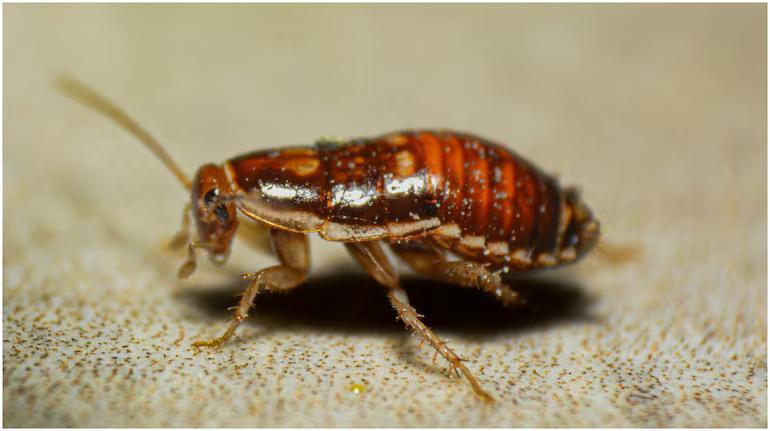
Madagascar Cockroaches ‘Cuddle’ When the Air Gets Dry, Researchers Find
In a fascinating discovery, researchers have found that Madagascar’s hissing cockroaches exhibit a unique behavior when the atmospheric conditions get too dry – they “cuddle” with each other. This behavior, as observed in a study published in the journal Ethology, helps prevent these cockroaches from drying out. The study highlights the remarkable adaptability of these insects in coping with environmental stressors.
The Madagascar hissing cockroach, also known as Gromphadorhina portentosa, is one of the largest cockroach species in the world. Native to the island of Madagascar, these insects are known for their distinctive hissing sound, which they produce by forcing air out of their bodies. Despite their intimidating appearance and sound, these cockroaches are harmless to humans and are often kept as exotic pets.
The study, conducted by researchers at Binghamton University, observed the behavior of Madagascar hissing cockroaches under different atmospheric conditions. The researchers found that when the air gets too dry, the cockroaches gather in large groups, often with their bodies touching each other. This behavior, which can be described as “cuddling,” helps to reduce water loss and prevent dehydration.
According to one of the researchers, “Even large adult insects rely on behavioural plasticity to cope with environmental stressors.” This means that these cockroaches are able to adapt their behavior in response to changes in their environment, in this case, the dryness of the air. By gathering in groups, the cockroaches are able to conserve water and reduce their risk of dehydration.
The study’s findings have important implications for our understanding of insect behavior and ecology. Insects, like all living organisms, are subject to environmental stressors such as drought, heat, and cold. The ability of Madagascar hissing cockroaches to adapt to dry conditions by changing their behavior is a remarkable example of evolutionary adaptation.
The researchers used a controlled environment to simulate different levels of humidity and observed the behavior of the cockroaches. They found that as the humidity decreased, the cockroaches began to gather in larger groups, with more individuals touching each other. This behavior was not observed when the humidity was high, suggesting that the cockroaches only exhibit this behavior in response to dry conditions.
The study also found that the cockroaches’ “cuddling” behavior is not limited to small individuals. Even large adult cockroaches, which are typically more independent, will gather in groups when the air gets too dry. This suggests that the behavior is an important adaptation for surviving in dry environments.
The discovery of this unique behavior in Madagascar hissing cockroaches has significant implications for our understanding of insect social behavior. While many insects are known to be social, with complex communication and cooperation, the behavior of cockroaches is often seen as more solitary. However, this study shows that even cockroaches are capable of complex social behavior, particularly in response to environmental stressors.
In conclusion, the study of Madagascar hissing cockroaches “cuddling” when the air gets dry is a fascinating example of evolutionary adaptation and behavioral plasticity. The ability of these insects to change their behavior in response to environmental stressors is a remarkable example of their ability to survive and thrive in a wide range of conditions. As we continue to learn more about the behavior and ecology of insects, we are reminded of the importance of conservation and protection of these fascinating creatures.
News Source: https://www.binghamton.edu/news/story/5929/research-cockroaches-gather-in-groups-to-keep-from-drying-out




